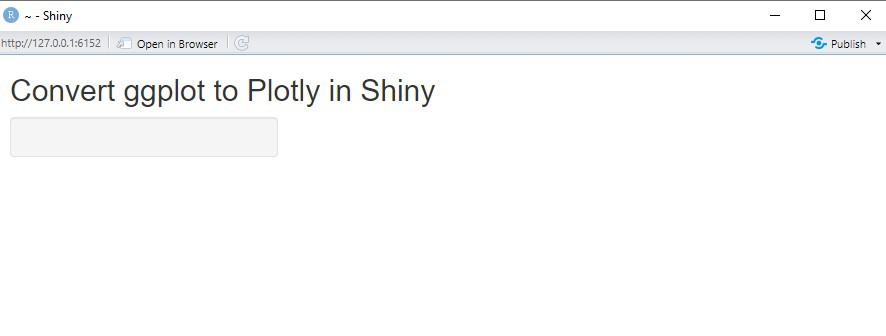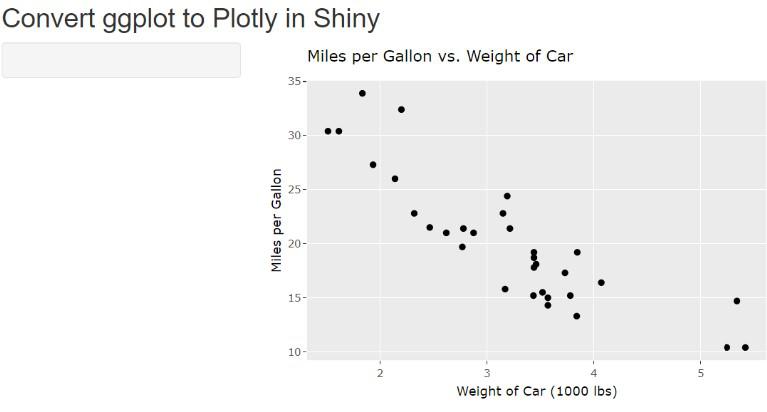
|
|
Combining the power of the ggplot2 and plotly in a Shiny application can enhance the interactivity of the visualizations. The ggplot2 is a versatile and powerful tool for creating static visualizations while plotly bringing these visualizations to life with interactive features. This article will guide you through the process of converting the ggplot2 objects to Plotly within a Shiny application. Setting Up the Shiny ApplicationFirst, we need to set up a basic Shiny application. The Shiny apps consist of two main components the UI and server. The UI defines the layout and appearance of the app while the server contains the logic to create the outputs. Now we will discuss step-by-step Convert ggplot Object to Plotly in Shiny Application using R Programming Language. Step 1: Installing Necessary PackagesBefore we start make sure we have the necessary packages installed: Step 2: Create Basic Shiny App StructureHere’s a basic structure of the Shiny app: Output:  Convert ggplot Object to Plotly in Shiny Application Step 3: Creating a ggplot2 PlotNow let’s create a simple ggplot2 plot. For this example, we’ll use the built-in the mtcars dataset. Output:  Convert ggplot Object to Plotly in Shiny Application Step 4: Converting ggplot2 Plot to plotlyTo convert a ggplot2 object to a plotly object we can use the ggplotly() function from the plotly package. Step 5: Integrating the Plot into a Shiny AppNow let’s integrate our plotly plot into the Shiny application. Output:  Convert ggplot Object to Plotly in Shiny Application ConclusionBy converting ggplot2 objects to plotly we can leverage the power of both the libraries to the create dynamic and interactive visualizations within the Shiny applications. This approach enhances the user experience and allows for the more engaging the data exploration. Convert ggplot Object to Plotly in Shiny Application-FAQsWhat is the main advantage of using plotly over ggplot2 in Shiny apps?
Can I customize the appearance of plotly plots?
Are there any performance considerations when using plotly in Shiny apps?
|
Reffered: https://www.geeksforgeeks.org
| R Language |
Type: | Geek |
Category: | Coding |
Sub Category: | Tutorial |
Uploaded by: | Admin |
Views: | 23 |